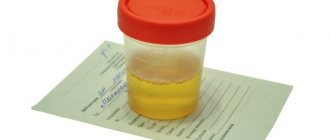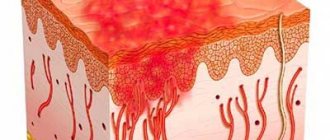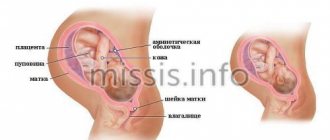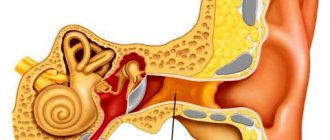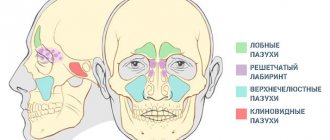Urinary tract infections are a common disease in everyday urological practice. Significant progress in the treatment of urinary tract infections has been observed over the past twenty years. The article touches upon such important issues as the etiology, pathogenesis and treatment of urinary tract infections in adults.
Urinary tract infections (UTIs) are a serious problem due to their prevalence and associated morbidity. According to statistics, they account for approximately 20% of all community-acquired and approximately 50% of nosocomial infections. Advances in recent decades have contributed to a better understanding of the pathogenesis of urinary tract infections and have elucidated the important role of both bacterial and patient-related factors in the development or prevention of infection.
The dynamic development of antibacterial therapy has greatly facilitated the correct treatment of UTIs, but the inappropriate and widespread abuse of antibacterial drugs has led to an increase in drug resistance of microorganisms.
Epidemiology of UTIs
The content of the article
Urinary tract infections are one of the most common infectious diseases in humans.
The incidence of UTI depends on the sex and age of the subjects, as well as on the specific characteristics of the study population.
- In the neonatal period, UTI is detected in approximately 60% of cases in boys, which is associated with a higher incidence of congenital urinary tract defects.
- From the age of three months, this trend is reversed, and the incidence of urinary tract infections in girls and women is ten times higher than in their male counterparts.
- Every second woman suffers from cystitis at least once in her life, and 10% of sexually active women develop UTIs once a year.
- Urinary tract infections are rare in men under 50 years of age, but in patients over 60 years of age the number of reported cases is growing rapidly. This is associated with the appearance of bladder obstruction, most often in the form of benign prostatic hyperplasia.
- The incidence of UTIs is much higher among people hospitalized for any reason or living in nursing homes or nursing homes.
Benign Prostatic Hyperplasia
The risk of UTI increases when there is an obstruction to the flow of urine or when circumstances favor bacterial colonization and growth. Physiological factors that predispose to UTIs include pregnancy, old age, and medical conditions such as diabetes and urolithiasis.
What are other possible causes of painful urination?
Painful and difficult urination occurs not only with infectious diseases of the urinary tract. It can hurt when urinating, even if the genitourinary tract is completely sterile.
Other possible causes of painful and unpleasant urination:
- stones in the kidneys;
- ovarian cysts;
- side effects of cancer chemotherapy;
- vaginal infections;
- vaginal irritation, for example, if you have sex without lubrication;
- increased sensitivity to artificial lubricants, soap, toilet paper and other hygiene products.
Try replacing them or stop using them. If the burning sensation and discomfort during urination have gone away, most likely it was associated with the factors above. Even if there is no more pain, you still need to go to the doctor and get examined.
Etiology and pathogenesis of UTI
The most common causes of UTIs are bacteria, and less commonly viruses, fungi, or parasites. The prevalence of certain types of bacteria isolated from patient urine depends largely on the population being studied. The situation is completely different for patients receiving outpatient treatment than for patients in hospitals.
Under physiological conditions, the urinary tract is sterile except at the end of the urethra. The first episode of UTI in an outpatient setting is caused by Escherichia coli in 80% of cases, Staphylococcus saprophyticus in 10-15% (except for the group of young sexually active women, in which it accounts for about 30%), other gram-negative bacteria (Proteus mirabilis, Klebsiella spp.) or gram-positive (staphylococci, streptococci, enterococci). 70% of recurrent community-acquired infections are caused by Escherichia coli. Also, the most common nosocomial infections are caused by Escherichia coli (about 50%), Enterobacter spp., Pseudomonas spp., Serratia marcescens, as well as staphylococci, enterococci and fungi.
Escherichia coli
In 95% of patients, a UTI is the result of infection with a single strain of bacteria. Infection with several strains is observed in 5% of patients, mainly in catheterized patients with weakened immunity, neurogenic bladder disorders or defects of the urinary system.
Infection of the urinary system can occur through the ascending route (urogenic infections), the bloodstream (hematogenous infections - very rarely caused mainly by Staphylococcus aureus), the lymphatic route, or continuously (in the presence of a urogenital or urogenital fistula).
A UTI is almost always caused by bacteria entering the urethra. Under physiological conditions, bacteria often enter the urinary tract, but due to the body's defense mechanisms, the development of UTIs is rare.
The most important natural defense mechanisms against UTIs are:
- length of the urethra in men;
- ureteral peristalsis, normal function of vesicoureteral valves;
- acidification and concentration of urine;
- correct bacterial flora of the vagina and area around the urethra;
- antibacterial properties of prostate secretion;
- mechanisms for preventing bacterial adhesion in the urinary tract: mechanical impact of a stream of urine, mucopolysaccharides of the bladder wall, IgG and IgA antibodies.
Urinary tract infections rarely occur in healthy people with normal anatomical structure and physiological function of the urinary tract. In case of obstructed urine outflow or weakening of the body due to systemic diseases (diabetes, gout, tumor process), we often encounter inflammatory changes in the urinary system.
Gout
The most common factors contributing to the development of a urinary tract infection include:
- 1st pregnancy,
- old age,
- obstruction to the outflow of urine – urolithiasis, prostate adenoma,
- atrogenic factors – urinary tract instrumentation (cystoscopy, bladder catheterization, ascending pyelography),
- congenital malformations of the urinary tract – double cup-pelvic system, retrograde vesicoureteral outflow,
- diabetes, gout,
- neurogenic bladder,
- end-stage renal failure (dialysis),
- sexual relations,
- prolonged immobilization in bed.
Urine in the urinary tract of a healthy person is sterile. The presence of bacteria in it indicates infection.
The main symptom for diagnosing a UTI is the so-called significant bacteriuria, when the number of bacteria in 1 ml of fresh, aseptically collected urine exceeds 100,000.
The occurrence of significant bacteriuria by gender and age is presented below:
| Age | women | Men |
| School age | 1% | 0,03% |
| 15-25 years | 3% | 0,5% |
| 30-35 years | 5-10% | up to 1% |
| 50-70 years | > 10% | up to 4% |
| over 80 years old | > 20% | > 10% |
In people with dysuria, the presence of up to 100 bacteria may indicate a urinary tract infection. Treatment for UTIs should begin as soon as clinical symptoms appear.
Tasks of a urologist:
- fight against bacteriuria,
- refusal of instrumentation of the urinary tract - bladder catheterization,
- proper treatment of systemic diseases.
Common pathogens of genitourinary infections
The causative agents of genitourinary infections can be bacteria, viruses, fungi, and protozoa.
Causative agents of nonspecific infections
Uncomplicated infections are most often (in 95% of cases) caused by the following microorganisms:
- E.coli (Escherichia coli) – up to 90% of cases.
- Staphylococcus saprophyticus (saprophytic staphylococcus) – up to 5% of cases.
- Proteus mirabilis (Proteus mirabilis).
- Klebsiella spp. (klebsiella).
Reference! Typically, uncomplicated infections are caused by one type of bacteria.
Complicated infections can be caused by several types of microbes at once. Most often these are bacteria Klebsiella spp., Pseudomonas spp (Pseudomonas aeruginosa), Proteus spp., sometimes fungi (most often C.albicans).
The most common specific infections and their causative agents
The most common specific infections are gonorrhea, chlamydia, and trichomoniasis. Their pathogens can also cause the following genitourinary pathologies: epididymitis, urethritis, prostatitis, adnexitis, vesiculitis, vaginitis, salpingitis, cystitis.
Gonorrhea
The causative agent of gonorrhea is Neisser's gonococcus (named after the scientist who discovered this bacterium in 1879). The inflammatory process usually develops in the genitourinary organs:
- The mucous membrane of the urethra in men.
- The mucous membrane of the urethra, the cervical canal, the gland of the vestibule of the vagina in women.
Neisser's gonococcus can also affect the rectum (in women due to the proximity of the anus and vagina, in men - if they are passive homosexuals), eyes, oral mucosa, tonsils, and pharynx. Such pathological processes occur during secondary infection (introduced by hand from the genitals).
On average, the incubation period of gonorrhea lasts 3-5 days, in some cases 10 days. There is also a latent course of the disease, when it does not manifest symptoms, for from 1 day to a month.
Gonorrhea symptoms:
- Painful urination.
- Purulent discharge from the urethra.
- Severe pain when urinating.
- Frequent urination.
In the subacute course of the disease, the symptoms are the same, but less pronounced.
Chlamydia
Caused by chlamydia (Chlamydia trachomatis). The disease is often asymptomatic or with mild symptoms, which include:
- Discomfort when urinating.
- Itching in the perineum.
- Pathological discharge from the genitals.
- Pain in the lower back or lower abdomen.
Reference! Chlamydia occurs in 20% of all sexually transmitted infections.
Trichomoniasis
The causative agent of the infection is the protozoan Trichomonas vaginalis. In women, the pathological process usually occurs in the lower genital tract, in men - in the urethra. In 70% of cases, trichomoniasis is asymptomatic. Its signs include:
- Itching in the external genital area.
- Burning during urination.
- Pain during or after sexual intercourse.
- Swelling of the groin area.
- Frequent urination.
In women, the disease also manifests itself as vaginal discharge (foamy, foul-smelling, white, yellowish, grayish, greenish, or bloody). Men experience discharge from the urethra.
Reference! The incubation period of the disease is from 3 to 28 days.
General principles of treatment of urinary infections
- Antibacterial treatment.
- When choosing a drug and method of its use, the following are taken into account:
- drug sensitivity of the bacterial strain;
- patient tolerability of the drug;
- severity of infection;
- medical expenses.
- Symptomatic treatment depending on the type of disease:
- bed rest;
- regular and complete emptying of the bladder;
- painkillers, antispasmodics;
- fluid intake (diuresis more than 1.5 liters per day);
- refusal of nephrotoxic drugs.
Fluid intake
The main goal of antimicrobial treatment is to eliminate pathogenic bacteria and prevent recurrent UTIs. Treatment procedures are differentiated depending on the severity of the infection and the sensitivity of the bacteria to the drugs used.
We now have a number of medications that are particularly useful in treating UTIs. These include antibiotics, fluoroquinolones, chemotherapeutic agents (eg, Bactrim, Urotrim, Bispetol) and herbal preparations.
The basic principle of antimicrobial treatment is to conduct an antibiogram of bacteria growing from the inflamed area and carry out targeted treatment. In the case of acute infections with unpleasant signs, high fever and general symptoms, urologists prescribe broad-spectrum antibiotics that act on gram-negative bacteria as first-line drugs. In these cases, the use of fluoroquinolones is increasingly recommended.
The patient must submit urine for bacteriological analysis and antibiogram before starting treatment, as well as 2, 14, 30 days after starting treatment. If urinary sepsis is suspected during the peak of fever, blood is taken for culture and antibiogram, and additional treatment with two broad-spectrum antibiotics is started.
Antibioticogram
Treatment of infectious pathologies
Therapy depends on the identified causative agent of infection. Doctors prescribe antibiotics, antimycotic and antiviral drugs. If the pathology is severely advanced, the patient is placed in a hospital and intravenous or intramuscular administration of medications is chosen. If the outflow of urine is complicated, nurses insert catheters into the patient or perform hemodialysis.
In simpler cases, outpatient treatment is possible, then doctors prescribe oral tablets and local use of sprays and ointments.
If the cause of UTI development is stones or adhesions, urologists remove them using minimally invasive methods, continuing therapy with antibiotics or other drugs.
To reduce symptoms, doctors prescribe non-steroidal anti-inflammatory drugs. A drinking regimen of at least 1.5 liters of liquid is also indicated.
Classification of urinary tract infections
Depending on the location of the infection, the age of the patient, the severity of symptoms and the presence of additional diseases, the following classification of UTIs has been proposed:
Depending on the severity of clinical symptoms:
- Symptomatic urinary tract infections.
A. simple – in people without aggravating factors:
- acute inflammation of the lower urinary tract;
- recurrent inflammation of the lower urinary tract;
- acute pyelonephritis.
Acute pyelonephritis
b. complex – in people with aggravating circumstances:
- acute inflammation of the lower urinary tract;
- recurrent inflammation of the lower urinary tract;
- acute pyelonephritis.
- Asymptomatic bacteriuria:
A. in patients without additional risk factors;
b. in patients with additional risk factors.
Depending on the location of the infection:
- Infections of the upper urinary tract: kidneys, vesico-pelvic system, perinephric area.
- Infection of the lower urinary tract: bladder, urethra.
Effective treatment of urethritis and cystitis
After confirming the diagnosis, the doctor prescribes medicine to combat the infection and symptoms:
- antibiotics,
- antispasmodics,
- painkillers.
Individuals suffering from a urinary tract infection should drink plenty of water to overcome dehydration. This also promotes the production of more urine and intensive flushing of infection from the urinary tract.
Patients should avoid drinking carbonated drinks, as well as tea and coffee. They irritate the bladder mucosa.
To relieve abdominal and back pain, use warm heating pads or warm compresses.
Asymptomatic bacteriuria
Most often it is discovered by chance during routine periodic examinations, since there are no subjective symptoms prompting the patient to seek medical help, and no noticeable changes in the urinary system are detected.
In the absence of concomitant disturbances in the outflow of urine, the course is usually mild and does not require treatment. In patients with urinary tract obstruction, symptoms usually do not resolve spontaneously. Antibacterial treatment is recommended for this group of patients.
Additionally, treatment should be started in the following cases:
- pregnancy (risk of pyelonephritis, premature birth, low birth weight of the newborn);
- before planned surgery (mainly on the urinary tract);
- diabetes.
In the first trimester of pregnancy, an antibiogram should always be performed before starting treatment for a UTI.
Why is infection dangerous?
UTIs become chronic relatively quickly, so patients experience constant problems with urination. The pathology will periodically resemble exacerbations: increased symptoms.
If left untreated, the tissues of the affected organs die and connective tissue grows instead. In this case, the affected element of the urinary system loses its basic function and structure. The most dangerous complication of the disease is kidney failure.
Also, due to the strong development of infection, sepsis and abscess are possible, leading to disability and even death of the patient.
Acute pyelonephritis
Bacterial nonspecific inflammation of the renal system. The infection is mainly caused by Escherichia coli or other gram-negative bacilli: Klebsiella spp., Proteus vulgaris. It most often occurs in girls over 5 years of age and in women before menopause.
In the case of pyelonephritis, the following is observed:
- sudden onset;
- fever (up to 40 ° C);
- chills;
- pain in the lumbar region (positive Goldflam sign on this side);
- nausea, vomiting;
- increased ESR, peripheral blood leukocytosis;
- in urine: numerous bacteria, leukocytes, leukocyte cells, protein, red blood cells.
Nausea with pyelonephritis
In case of AP, in addition to urine analysis and culture, abdominal ultrasound and urography (after the disappearance of acute symptoms) should always be performed to visualize disturbances in the outflow of urine.
Patients with mild acute pyelonephritis can be treated on an outpatient basis. In severe cases, patients must be hospitalized. Initially, medications are used parenterally. Only 24 hours after the fever has disappeared, they can be administered orally.
Hospitalization of patients with acute pyelonephritis is carried out in the following cases:
- severe infection;
- no improvement after 2 days of targeted antibiotic therapy;
- difficult outflow of urine, mainly in older people and patients with diabetes;
- pregnancy.
If fever and low back pain persist after 3 days of treatment, repeat urine culture and repeat abdominal ultrasound to look for peri- or intrarenal abscess or previously unrecognized hip joint abnormalities.
The most common complications of acute pyelonephritis include chronic pyelonephritis, urinary tract sepsis, hydronephrosis, perirenal abscess, renal papillary necrosis, and scarring of the renal cortex.
Chronic pyelonephritis most often affects women. It is characterized by an insidious onset, a long, rarely symptomatic course with periodic exacerbations. Often leads to kidney failure.
Causes of genitourinary tract infections
In 89% of diagnosed UTI cases, the cause lies in the appearance of a large number and further development of bacteria:
- streptococci, staphylococci, enterobacteriaceae family . Escherichia coli, gonococcus, chlamydia become causative agents of the inflammatory process in the ureter or renal pelvis in 91% of cases.
- The second place is occupied by viruses , for example, herpes or hepatitis B.
- In the third place - fungi , and in 85% of cases the infection begins due to the spread of fungi, which are present in small quantities in the microflora of the urethra.
The most prominent representative is fungi of the genus Candida. In case of illiterate treatment or its absence, a bacterial or bacterial infection is added to the fungal or viral infection, which aggravates the patient’s health condition.
MAKE AN APPOINTMENT WITH A UROLOGIST
Klokov Andrey Nikolaevich
Urologist-andrologist, doctor of the highest category
Make an appointment
Cystitis – inflammation of the bladder
Acute cystitis in people under 50 years of age applies only to women. This is an inflammation of the mucous membrane, sometimes of the deeper layers of the bladder wall.
Cystitis
Symptoms:
- sudden onset;
- symptoms of bladder irritation (pollakiuria, urge, painful urination);
- pain above the pubic joint;
- red blood cells, white blood cells and numerous bacteria are found in the urine.
Young women with dysuria usually develop one of three types of infection: inflammation of the bladder, urethra, or vagina. These diseases are differentiated based on clinical symptoms and laboratory urine test results.
| Diagnosis | Piuria | Hematuria | Bacteriuria |
| Cystitis | usually | Sometimes | From 100 to 100 thousand |
| Urethritis | usually | rarely | up to 100 |
| Vaginitis | rarely | rarely | up to 100 |
With vaginitis, there is discharge, itching in the vagina, pain during sexual intercourse, but there is no pollakiuria or painful urge to urinate.
Treatment of cystitis should be carried out from 3 to 7 days. In the uncomplicated form, the effectiveness of 3-day treatment is the same as that of 7-day treatment, but fewer side effects were found.
Urologists use longer treatment in women with the following conditions:
- pregnancy, diabetes;
- symptoms last more than 7 days;
- vaginal contraception;
- age over 65 years.
Common signs of genitourinary infections
Despite the fact that each disease has its own “set” of symptoms, there are symptoms characteristic of many genitourinary infections:
- Strong and frequent urge to urinate.
- Changes in the color and smell of urine, its cloudiness, and the appearance of sediment in it.
- Pain in the lumbar region and lower abdomen.
- Insufficient emptying of the bladder (urine is released in small quantities).
- Discomfort when urinating: pain, burning.
Reference! The above symptoms may be accompanied by fever, vomiting, and nausea.
Urethritis
Most often, the disease is associated with sexual contact, catheterization or endoscopy of the bladder. Urethritis always occurs in patients with an indwelling urinary catheter. The opening of the urethra is red, patients complain of a number of symptoms:
- burning pain and itching in the urethra;
- leakage of mucous, glassy or purulent discharge;
- lower abdominal pain.
Until recently, the most common cause of urethritis was gonorrhea. The infections are now twice as likely to be caused by Chlamydia trachomatis and Ureoplasma urealyticum. In 30% of cases, gonorrhea infection coexists with two others.
Urethritis
Standard urine cultures are often sterile, followed by immunological tests and isolation of microorganisms on specially prepared media.
The most common treatments are a single dose of fluoroquinolones and doxycycline for 7 days.
Antimicrobial prophylaxis
Patients with recurrent UTIs associated with sexual intercourse are recommended to take the drug after coitus. With this prevention regimen, the dose of the drug, the incidence of adverse reactions, and the selection of resistant strains are reduced;
The decision to prescribe ABT should be made after a detailed discussion with the doctor if behavioral therapy and non-antimicrobial prophylaxis measures are ineffective.
The rate of synthesis of new antibacterial and antimicrobial agents is significantly lower than the rate of development of antibiotic resistance. Prevention of recurrent UTIs is often ineffective or even dangerous, leading to an even greater increase in resistant strains of bacteria and the occurrence of adverse reactions. Alternative methods of treating infectious diseases of the urinary system can rightfully include virulent bacterial viruses (bacteriophages). A review of publications in recent years indicates a significant increase in interest in phage therapy for infections of the urinary system. The use of the phage typing technique will make it possible to use bacteriophages as a therapy for recurrent UTIs, as well as in patients undergoing hospital treatment who have been exposed to aggressive nosocomial flora. Bacteriophages are safe for patients who need UTI prevention. The species-specific action of phages ensures the stability of the intestinal flora.
Recurrent urinary tract infections
Recurrent UTIs are caused by the same pathogen as the first case, usually within 2 weeks after stopping treatment. Mostly relapse occurs in women, and most often it is inflammation of the bladder. After the first episode of urinary tract infection, approximately 20% of UTIs are rediagnosed within one year.
Causes of recurrent urinary tract infections include:
- incorrectly selected drug;
- route of administration, dosage, duration of treatment;
- obstruction to the flow of urine.
In treatment, urologists recommend constant use of antibacterial drugs and prophylaxis after sexual intercourse. For urinary tract infections less than twice a year, only episodes of infection are treated.
When infection occurs more than 3 times a year and is not associated with sexual intercourse, the drugs are administered daily or 3 times a week at night, while in the case of infection associated with sexual intercourse, the drugs are administered once immediately after sexual intercourse.
Treatment for 3–6 months reduces the incidence of urinary tract infections by up to 5–10%.
Organs of the genitourinary system
The genitourinary system is the collection of organs of the urinary and reproductive systems. There are also organs that perform both functions at once: urinary and reproductive. These include, for example, the urethra in men.
Organs of the urinary system:
- The kidneys are a paired organ located in the lumbar region that removes harmful and unnecessary substances from the blood, participates in the formation of red blood cells and maintains blood pressure.
- Ureters - deliver urine (excess fluid removed from the body by the kidneys along with harmful substances) to the bladder.
- The bladder serves as a reservoir for urine.
- The urethra (urethra) removes urine from the bladder.
The organs of the urinary system in men and women are the same (except that the urethra has a different structure), and the organs of the reproductive system are different. The organs of the reproductive system in men include:
- Testicles and their appendages.
- Vas deferens and ejaculatory ducts.
- Seminal vesicles.
- Urethra.
- Prostate gland (prostate).
The female reproductive system consists of the following organs:
- Ovaries and their appendages.
- Uterus, cervix and fallopian tubes.
- Vaginas.
The external organs of the reproductive system in men include the scrotum and penis, in women - the labia majora, labia minora, and clitoris.
Sources
- Schaeffer A.: Urinary tract infections. Campbell Urology, 1992.
- Naber K.G. et al.: Recommendations for the treatment of urinary tract and male genital tract infections, 2000.
- Grinevich V. et al.: Urinary tract infections. Urological review, 2000.
- Safir MH et al.: Urinary tract infections: simple and complex, 1998.
- Eichman V.: Treatment of bacterial infections of the genitourinary system. Urological Review, 2000.
- Macfarlane MT: Urinary Tract Infections, 1997.
ONLINE REGISTRATION at the DIANA clinic
You can sign up by calling the toll-free phone number 8-800-707-15-60 or filling out the contact form. In this case, we will contact you ourselves.
If you find an error, please select a piece of text and press Ctrl+Enter
Introduction
Urinary tract infection (UTI) is a term used to describe a bacterial infection of the urinary system. The most common agent of UTI is E. coli
(85% of community-acquired and 50% of nosocomial UTI cases), less common are
Proteus spp.
,
Klebsiella spp.
,
Enterococcus faecalis
,
Staphylococcus saprophyticus
.
UTIs can also be caused by Chlamydia trachomatis
,
Mycoplasma hominis
,
S. aureus
,
S. epidermidis
,
S. saprophyticus
,
Haemophilus influenzae
,
Candida albicans
[1].
UTIs spread throughout the body:
urethral (ascending) route;
downward path;
hematogenous or lymphogenous route;
directly from foci of infection located near the organs of the genitourinary system.
The main risk factors for UTI include:
unprotected sexual intercourse;
surgeries or invasive diagnostic procedures;
diabetes;
elderly age;
use of a diaphragm, cervical cap, spermicidal gels.
In hospital settings, infection most often occurs when using urinary catheters [2].
Traditionally, complicated and uncomplicated UTI are clinically distinguished (Table 1).
The problem of UTI in urology has always been extremely relevant and remains in the field of view of specialists all over the world. In an era of increasing microbial resistance, adequate and rational prescription of antimicrobial drugs is of particular importance for the cure of a urological patient. The cost of diagnosis and treatment of bacterial UTIs is a major factor influencing healthcare costs today. The total economic burden consists of the costs of outpatient and inpatient treatment [2, 4]. The urinary tract is the most common site of nosocomial infection, with approximately 40% of nosocomial infections reported in acute care hospitals being urinary tract infections. The vast majority of hospital-acquired infections are associated with indwelling catheters. On average, a hospital-acquired UTI increases a patient's length of stay by 1 bed day, resulting in nearly a million additional days in the hospital. More than 100,000 hospitalizations per year are associated with urinary tract infections [5]. Uncomplicated cystitis, in particular, is the most common outpatient infection, while pyelonephritis accounts for the majority of hospitalizations.
I am pregnant. How will a UTI affect my baby?
An untreated urinary tract infection can be complicated by kidney inflammation. This can trigger premature contractions and labor. If you detect the symptoms in time and visit a doctor, the bacteria will not have time to infect the kidneys and the disease will be cured without complications.
For pregnant women, treatment tactics change. Antibiotics that are likely to harm the fetus are excluded. If the symptoms are mild, the woman is treated on an outpatient basis, but under periodic medical supervision at home. If the symptoms are severe, the woman is recommended to be treated in a hospital.
Infectious pathology of the urinary organs can lead to fetoplacental insufficiency. The symptom complex is characterized by the fact that the child does not have enough oxygen - fetal hypoxia occurs. This can lead to disruption of the child's internal organs, which can slow down the growth and development of the fetus.
Infection of the genitourinary system can lead to intrauterine infection of the fetus. In this case, the child is born with respiratory failure, skin lesions, congenital pneumonia and delayed psychomotor development.
The sooner you go to the doctor, the higher the likelihood that the pregnancy will go without complications and the birth will go well.
How are kidney and ureter diseases treated?
Treatment depends on the disease and its stage, as well as the presence of concomitant pathology. It includes conservative therapy (drugs affecting bladder activity, prostate volume, litholytic and lithokinetic drugs, diuretics, antispasmodics, immunomodulators, antipyretics and anti-inflammatory drugs) and surgical methods in cases where conservative therapy is not indicated or is not effective .
In our clinic, we perform endoscopic and laparoscopic operations with minimal intervention in the body, which allow us to completely remove pathological neoplasms of organs. You can find detailed descriptions of the operations we perform in the “Treatment Methods” section.
Do I need to see a doctor?
Yes. Cystitis or urethritis are not terrible diseases. However, their consequences can lead to serious complications, in which case surgery and long-term conservative treatment will be required.
You need to tell your doctor about your symptoms, their dynamics and probable causes (new sexual partner, sex without contraception, hypothermia). You should tell your doctor if you have other medical conditions, such as AIDS, diabetes, or congenital abnormalities of the urinary tract. These factors influence the choice of drug and treatment tactics.
Your doctor may think that trouble urinating is due to a vaginal infection. He will take biological material and send it to the laboratory for microscopic and bacterial examination. Laboratory test results will indicate whether there are fungi or other microorganisms in the vagina.
If no pathogenic microorganisms are found in the vagina, you may be asked to do a laboratory analysis of biological material from the bladder.



